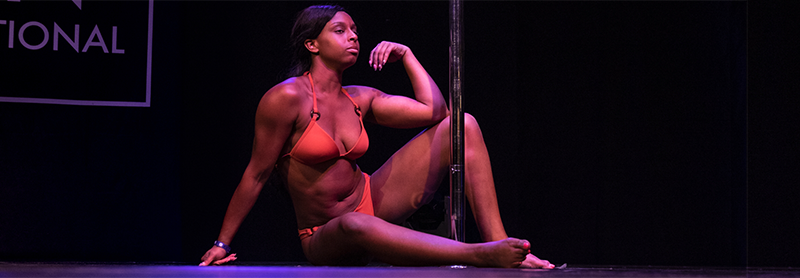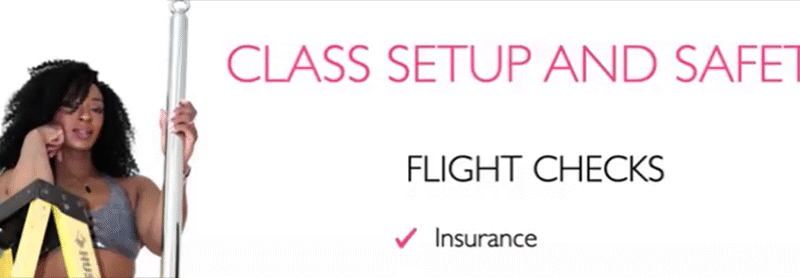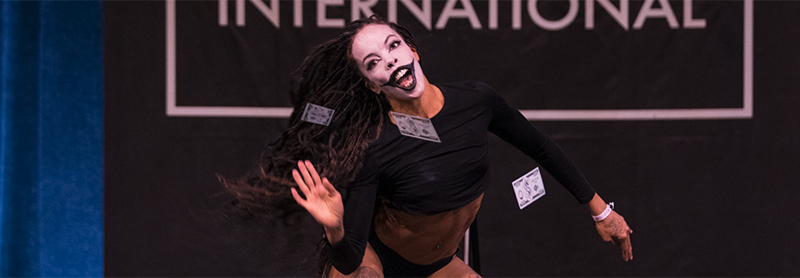So, you’ve been poling for a while, and you want to get some amazing photos…

What Is Social Media Marketing?
Social media marketing is the general term for the type of marketing brands use to promote themselves on social media platforms. The goal is to convert visitors to interacting with your brand, whether that is purchasing a product or service, engaging with your posts, or learning more about what you provide.
Social media platforms have their own algorithms that help regulate what content is shown to users, which means that there is a way to both rise to the top of the trending charts and also a way to get banned for violating their terms of service or appearing to violate those terms.
Looking for general marketing tips or not sure where to start for your marketing? Read this first.
Still too much info? Read the only three marketing tips you’ll ever need to get started.
Social Media Basics
Especially in a niche such as pole dancing, there is no need to have the full array of social media marketing managed every second of the day. It’s important to think about where your demographic is, the capabilities the platform gives you, and what you want out of your social media account.
Different Platforms
There are dozens of social media platforms on the internet today, but there are a few that are most important for pole dancing.
Since pole dancing is an inherently visual art so Twitter and other text-based platforms are likely not going to be good for promoting your brand, whether you sell products, if you are an individual pole dancer, or if you provide a service.
Instagram, Facebook, TikTok, and Pinterest are the main platforms that pole dancers frequent as it allows users to share, upload, and interact with images and videos easier.
The Elements of Social Media
There are several elements that almost any social media platform will provide to give you better control over the items you post, who sees your content, and what content you see:
Hashtags
Hashtags are important because they help push your content out to a wider audience for a very specific topic or trend and allow users to search on content type. Twitter, Facebook, Instagram and Pinterest are the main social media platforms that use hashtags in their posts, and these should be used on every single post you make.

Cleanliness of your post is also important, so on Instagram, for example, nesting your hashtags in the comments section is an easy way to keep the post description clean but still get your post seen by those hashtags
Note that it is important to change up your hashtags to avoid pinging the platform’s algorithms for spam. You can see how popular a hashtag is by either visiting a “trending” section on the platform, if it exists, or by typing in your hashtags in the search bar and looking at how many posts exist under that hashtag.
Popular hashtags are generally ones that a lot of people are looking at consistently, so long as they are generic and not tied to an event or seasonal trend. Conventions, holidays, and pole challenges all fall into this category. Events and holidays typically start seeing new hashtag activity one to two months before and after, peaking right around the time it occurs.
Facebook and Instagram also have an algorithm that is meant to remove copyright and sexually explicit content. This, unfortunately, has targeted a lot of the pole industry and “shadowbanning” has become a real issue in the pole dance and in the SW/stripper communities.
To avoid getting banned by the algorithm, try not to use banned hashtags, post nude imagery or exceedingly suggestive content. This is a battle sex workers are constantly fighting. Porn sites, porn stars, strippers, and nude models are generally the main target of this algorithm, but it has leaked into other areas of the community, pinging even sports pole dancers.
To avoid using banned hashtags, search the hashtag you want to use ahead of time. If it displays a notice to the tune of “this hashtag is not currently visible” then it has been banned at least temporarily. There are some lists online that provide lists of banned hashtags each year, but they are seldom comprehensive. Additionally, avoid using hashtags that are plainly explicit, such as “#sex” or “#porn”.
Engagements
Engagement is simply a term used to describe how much your audience is interacting with your brand.
Shares are an important part of your social media stats, and they can tell you how many times people have re-shared content. This is also why, if you post original content, it is generally good for your brand to add a watermark or hashtag to let people know where to find the original source. A simple line of text on the image somewhere @yoursocialhandle works.
Engagements, which is available on some platforms like Facebook, let you know how many people took an action on your post (clicked play on the video, shared, liked, saved, sent via messenger, etc.)
“People Reached” is a way of telling you how many people saw your post, even if they were scrolling through their feed and did not stop to look at your post.

Likes are good metrics to aim for, but comments give your posts an even stronger boost to the algorithm’s relevancy score, which means the platform will rank your post more likely to be seen higher up in a follower’s news feed.
Comments from your own profile doesn’t count towards this goal, but comments from other users will get you closer to the “trending posts” tab.
Note that both metrics are important, but comments are generally weighted heavier.

Analytics
Analytics, also known as Insights, are an important part of analyzing how well your social media profile is performing and are built into every social media platform that is set up as a business account.

By looking at these metrics, you can tell what posts are reaching your audience and when, what age range your brand is most popular with, and what times they are most active on your profile.

By posting at the optimal times for your profile, you are more likely to get more engagement from the audience your brand is attracting the most. Gender and age range metrics can help you tailor your content to those demographics.
If you’re struggling with engagement, you may come across some marketers who suggest using “pods” or “engagement groups.” Do not use these and run for the hills. This is a very spammy tactic that is directly against many social platforms’ terms of service. If you are found to be using a pod or engagement group, your account will be penalized and may even be deleted.

Promotions
Your brand promotions should not take up more than 20% of your total posts.
As a general rule of thumb, a ratio of 80/20/20 is recommended on social media profiles. 80% engaging content the audience cares about and can relate to, 20% advertisements for your own brand, and 20% of offers, challenges, and non-brand specific advertisements.
This is largely meant for the content of the post itself, whether you are using images or videos. The descriptions can still promote your brand, but you may see an increase in engagement if that is the only thing you do in your posts.
All of the social media platforms offer paid social media options through advertising or boosting posts. This can be a great way to get information out to people who are not yet your customers, however it can also be expensive and the major social media platforms are notorious for not approving pole content even when it falls within platform terms.
Remember
Social media is an important part of your marketing strategy but is not the only way to reach your audience. Make sure to create a marketing plan first and understand who you are selling to first. Then develop a plan to reach those people most effectively with the time and budget constraints you have for your pole business.



